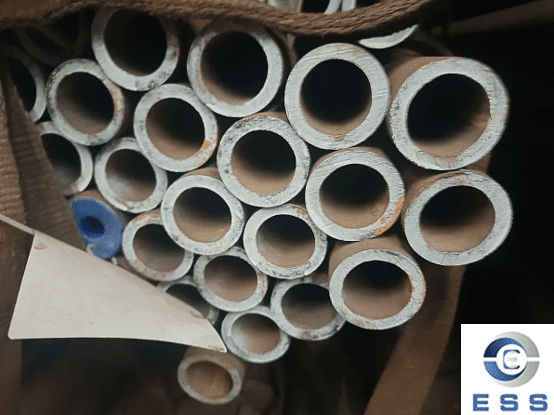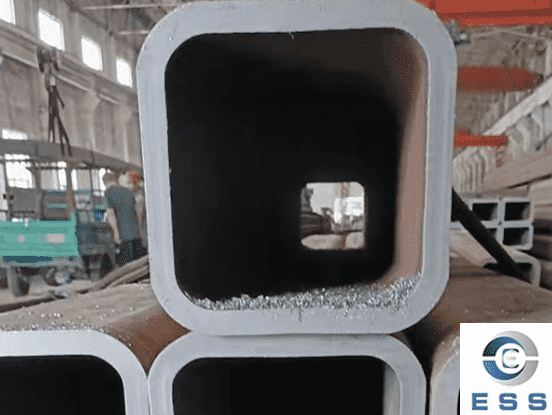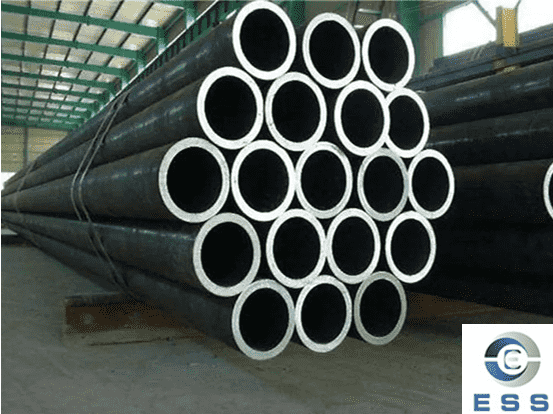
The production process of high-pressure boiler
tube mainly includes the following key steps:
Raw material selection
1. Material requirements
Selecting high-quality raw materials is the
basis for producing high-pressure boiler tubes. Commonly used raw materials
include carbon
steel pipe, alloy steel pipe, etc. These materials need to have good high
temperature resistance, corrosion resistance and high pressure performance. For
example, the mild
steel pipe can adapt to the working environment of boiler tubes due to
their relatively low carbon content.
2. Chemical composition control
The chemical composition of the raw
materials must meet the relevant standards to ensure the mechanical properties
and corrosion resistance of the final product.
Preparation of tube blanks
1. Hot rolling or cold drawing
The raw materials are processed into tube
blanks through processes such as hot rolling or cold drawing. The quality of
this step directly affects the subsequent processing and product performance.
For tubes that require high-precision dimensions, such as the cold drawing
process of precision
tube, it is particularly important.
2. Tube blank inspection
The quality of the tube blanks is
inspected, including appearance, size, internal defects, etc., to ensure that
the tube blanks meet production requirements.
|
Parameter
|
Hot Rolling
|
Cold Drawing
|
|
Billet Entry Temperature
|
1,200–1,250 °C
|
—
|
|
Finish-Rolling Temperature
|
≥ 850 °C
|
—
|
|
Rolling Speed
|
0.5–2 m/s
|
—
|
|
Drawing Annealing
|
—
|
580–650 °C, hold 30–60 min
|
|
Drawing Speed
|
—
|
0.1–0.5 m/s
|
|
Outside Diameter Tolerance
|
±0.5%
|
±0.15 mm
|
|
Wall-Thickness Tolerance
|
±0.5%
|
±0.10 mm
|
Forming Process
1. Die extrusion
The tube billet is extruded into the
required shape and size through the die. This step requires the uniformity and
thickness accuracy of the tube wall. For some special-purpose pipes, such as
oil casing pipe,
tubing pup
joint and drill
pipe, specific size and performance requirements must be met during the
forming process.
2. Cutting and trimming
The extruded tube billet is cut and trimmed
to obtain a high-pressure boiler tube that meets the length and shape
requirements.
Heat treatment
1. Purpose
The heat treatment process can improve the
mechanical properties and corrosion resistance of high-pressure boiler tubes.
2. Common processes
Including normalizing, quenching,
tempering, etc. Normalizing can eliminate the structural defects of the
material and improve the comprehensive performance of the material; quenching
can significantly improve the hardness and strength of the material; tempering
can eliminate quenching stress and improve the toughness and plasticity of the
material.
3. Parameter control
The temperature, time and other parameters
in the heat treatment process need to be strictly controlled to ensure the
stable performance of the product.
|
Treatment
|
Heating Rate (°C/min)
|
Soak Temperature (°C)
|
Soak Time
|
Quench Medium
|
Cooling Rate (°C/s)
|
Final Hardness (HRC)
|
|
Normalizing
|
50–100
|
870–920
|
2–4 min per mm of wall thickness
|
Air
|
5–15
|
20–25
|
|
Quenching
|
50–100
|
840–880
|
20–40
|
Water or Oil
|
50–200
|
45–55
|
|
Tempering
|
30–60
|
550–680
|
60–120
|
Air
|
5–15
|
25–30
|
Nondestructive testing
1. Testing methods
Internal defect detection and dimensional
measurement of products are performed through X-ray, ultrasonic and other
testing methods.
2. Purpose
Ensure that products meet standard
requirements, detect and handle internal defects of products in a timely
manner, and improve product quality and reliability.
Surface treatment and packaging
1. Surface treatment
The high-pressure boiler tubes are cleaned,
rust-removed, and treated to improve the appearance quality and corrosion
resistance of the product.
2. Packaging
The treated high-pressure boiler tubes are
properly packaged to prevent damage during transportation and storage.
Summary
The production process of high-pressure
boiler tubes is a complex and delicate process that requires strict control of
process parameters and quality requirements at all links. By introducing
advanced equipment and technology, optimizing raw material selection, improving
molding processing technology, optimizing heat treatment technology, and
strengthening the application of non-destructive testing technology, the
production level and competitiveness of high-pressure boiler tubes can be
continuously improved.
Read more: How To Weld Boiler Tubes?













 Eastern Steel Manufacturing Co.,Ltd not only improve product production and sales services, but also provide additional value-added services. As long as you need, we can complete your specific needs together.
Eastern Steel Manufacturing Co.,Ltd not only improve product production and sales services, but also provide additional value-added services. As long as you need, we can complete your specific needs together.










